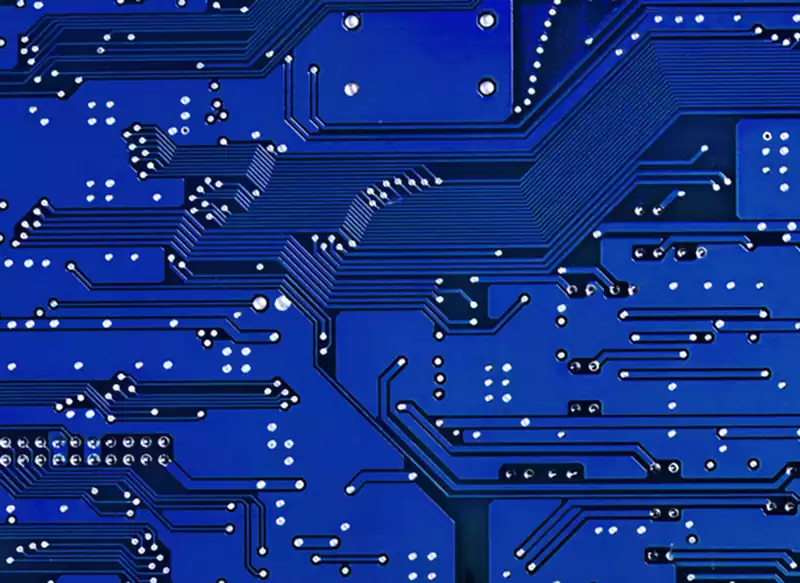A multilayer pcb board refers to a printed circuit board comprising three or more conductive pattern layers laminated together with insulating materials between them, wherein the conductive patterns are interconnected as required. Multilayer circuit boards represent the evolution of electronic information technology towards high speed, multifunctionality, large capacity, compact size, thin profile, and lightweight design.
Advantages and Disadvantages of Multilayer PCB Boards
Advantages:
High assembly density, compact size, and lightweight construction. The elevated assembly density reduces interconnections between components (including electronic parts), thereby enhancing reliability. Increased routing layers expand design flexibility. Capable of forming circuits with specific impedance characteristics. Enables the creation of high-speed transmission circuits. Allows for the implementation of electrical and magnetic shielding layers, as well as metallic core heat dissipation layers to fulfil specialised requirements such as shielding and thermal management. Simplified installation with high reliability.
Disadvantages: High cost; extended production lead times; necessitates high-reliability testing methodologies. Multilayer printed circuits represent the evolution of electronic technology towards high speed, multifunctionality, large capacity, and compact size. With the continuous advancement of electronic technology, particularly the widespread and in-depth application of large-scale and very large-scale integrated circuits, multilayer printed circuits are rapidly developing towards high density, high precision, and increased layer counts. Technologies such as micro-fine lines, small-aperture through-holes, blind and buried vias, and high board thickness-to-aperture ratios have emerged to meet market demands.

Differences Between Multilayer PCB Boards and Double-Sided Boards
A multilayer PCB board is a printed circuit board formed by laminating and bonding alternating layers of conductive patterns and insulating materials. It comprises three or more layers of conductive patterns, with electrical interconnections between layers achieved through plated-through holes. By employing a double-sided board as the inner layer with two single-sided boards as outer layers, or two double-sided boards as inner layers with two single-sided boards as outer layers, these layers are laminated together using a positioning system and insulating adhesive. Conductive patterns are then interconnected according to design specifications, resulting in four-layer or six-layer printed circuit boards, also termed multilayer PCBs.
Compared to the production processes for standard multilayer and double-sided boards, the primary differences lie in several unique steps added for multilayer boards: inner layer imaging and blackening, lamination, etching, and drill residue removal. Within largely similar processes, certain parameters, equipment precision, and complexity levels also differ. For instance, the metallisation connections within multilayer boards are critical to their reliability, demanding stricter hole wall quality than double-sided boards. Consequently, drilling requirements are significantly higher. Additionally, the number of laminated sheets per drilling operation, drill bit rotational speed, and feed rate during drilling differ from those for double-sided boards. Inspection protocols for both finished and semi-finished multilayer boards are significantly more stringent and complex than for double-sided boards. Due to their intricate structure, multilayer boards require temperature-uniform glycerine hot-melt processes rather than infrared hot-melt techniques, which may cause localised overheating.
Multilayer PCB boards are typically formed by laminating multiple copper-clad laminates (cores) with copper foil on both sides, combined with prepreg (PP) sheets as required. Copper foil is then applied to the outermost layer before the assembly is subjected to heat and pressure to bond the layers, creating a multilayer board with multiple copper layers.
Prepreg (PP): A semi-cured sheet material, also termed pre-impregnated material, consisting of thin laminates impregnated with resin and cured to an intermediate stage (B-stage). Primarily used as the bonding and insulating material for the conductive patterns within the inner layers of multilayer printed circuit boards. Upon lamination, the semi-cured epoxy resin within the prepreg is squeezed out, begins to flow and solidify, bonding the multiple layers of the circuit board together while forming a reliable insulating layer. In PCB manufacturing terms, prepreg essentially functions as an adhesive, using lamination to join multiple core sheets into a multilayer board.
Core: A rigid substrate material of specific thickness, with copper cladding on both surfaces.
Differences between Prepreg and Core:
- Within PCBs, Prepreg is a material component. The former has a semi-solid texture resembling cardboard, while the latter is rigid, akin to copper clad laminate;
- Prepreg functions as an adhesive + insulator; Core serves as the foundational material for PCBs, with entirely distinct roles;
- Prepreg can be rolled, whereas core cannot be bent;
- Prepreg is non-conductive, while core possesses copper layers on both sides, serving as the conductive medium for printed circuit boards.
Multilayer pcb board manufacturing methods include the plated-through-hole (PTH) process and the high-density interconnect (HDI) method, both achieving circuit board structures through combinations of different techniques. Currently, the most widely adopted is the PTH process. Having undergone over half a century of development and refinement, PTH has achieved considerable maturity in terms of equipment, materials, and processes, establishing a robust industrial foundation. The plated through-hole method can produce both double-sided and multilayer boards, with process flows and equipment capable of reuse. This technique involves penetrating the surface and inner layer conductor patterns of the insulating substrate with through-holes. Metal layers are then electroplated onto the inner walls of these holes, enabling connections between corresponding conductor patterns across different layers.
